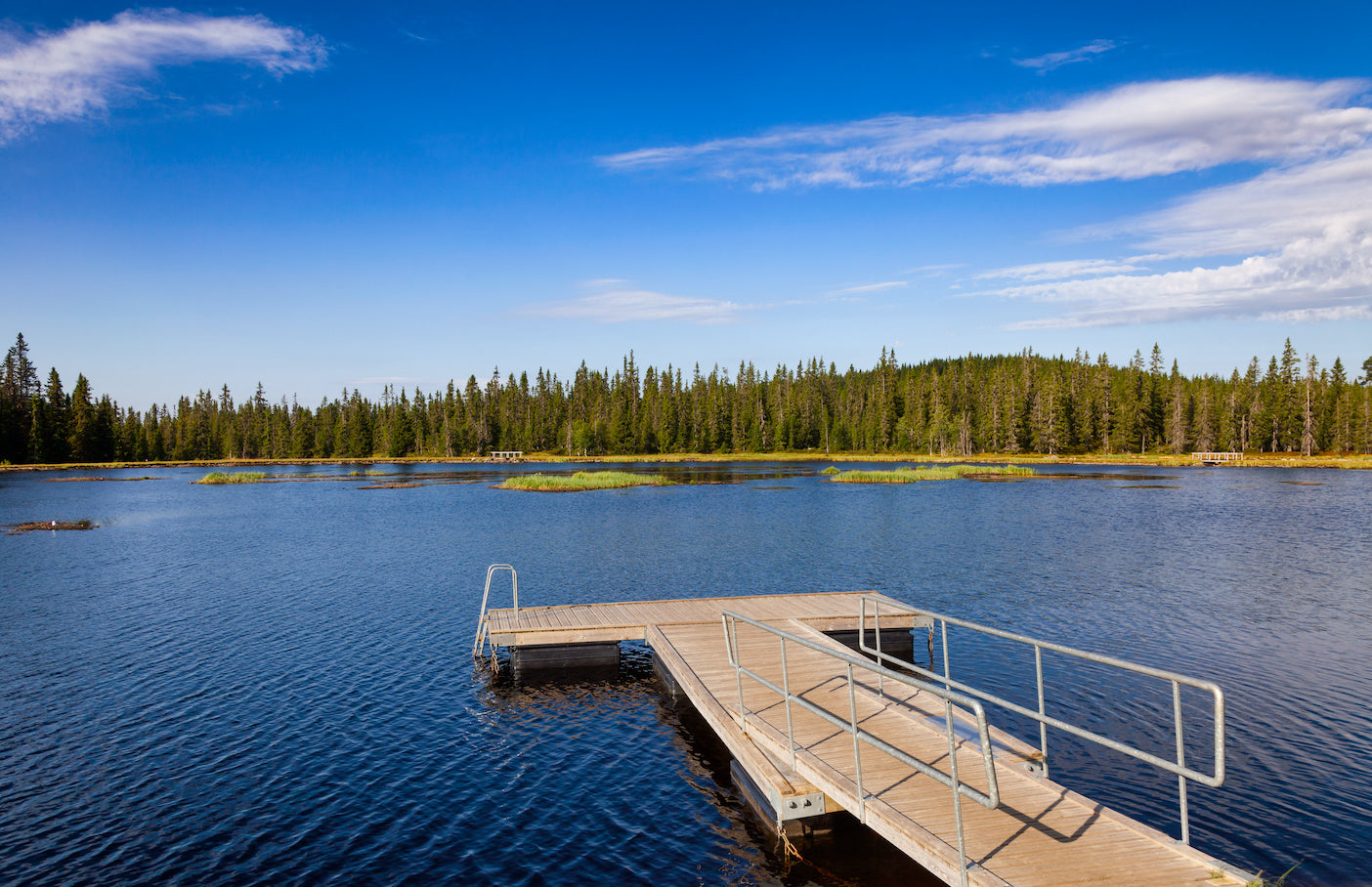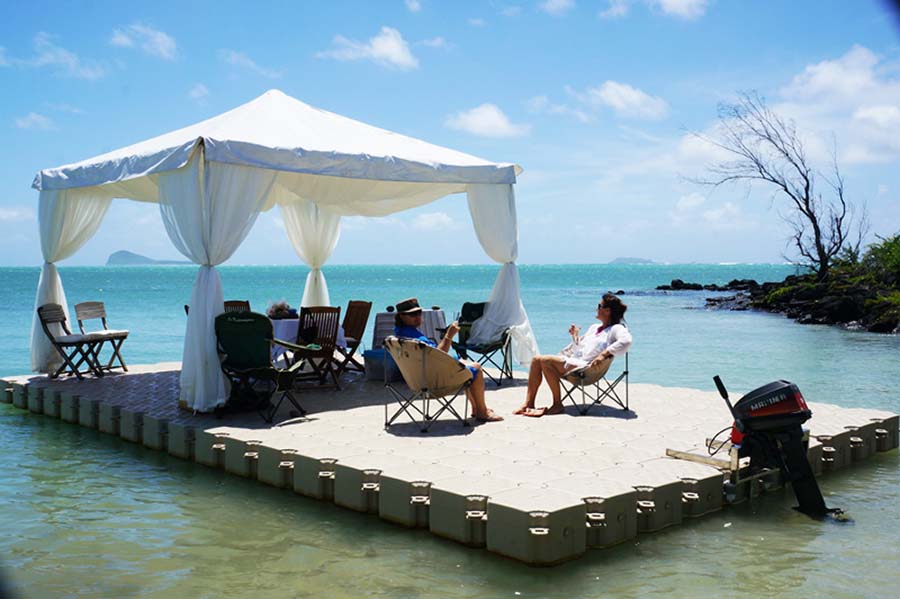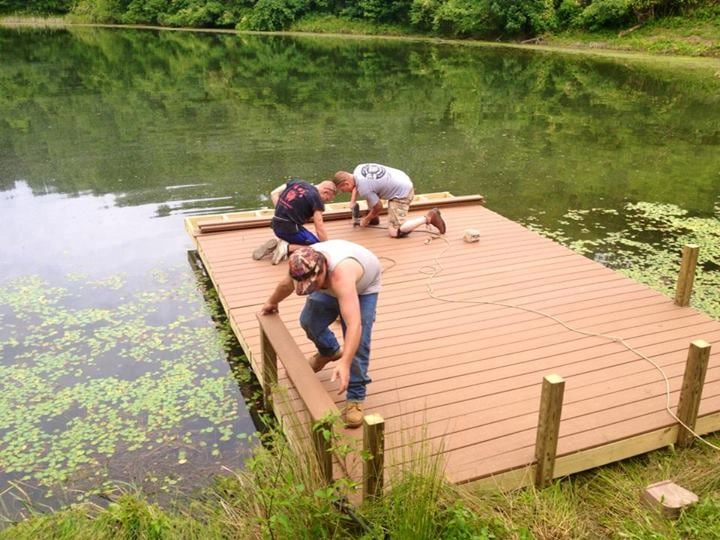Upgrade Your Waterside With Long Lasting Floating Docks
Updating your waterfront with resilient floating docks can dramatically improve both performance and aesthetics, giving a versatile remedy for numerous water tasks. With a variety of products available, including low-maintenance alternatives and standard wood, selecting the right dock can complement your personal design and meet sensible requirements.
Benefits of Floating Docks
Floating docks offer a wide variety of advantages that enhance their appeal for various maritime applications. One of the main benefits is their versatility to altering water levels - floating docks. Unlike traditional set docks, floating docks surge and loss with the trend, making sure consistent access for watercrafts and boat no matter environmental problems. This attribute considerably minimizes the danger of damages to vessels, as they remain firmly moored also during changes in water depth.
In addition, floating docks are less complicated to set up and relocate, providing versatility for seasonal or short-lived use. Their modular design permits modification to fit certain needs, whether for exclusive marinas, household waterfronts, or industrial applications.
In addition, floating docks produce minimal disturbance to the water atmosphere, protecting neighborhood ecosystems and decreasing the likelihood of disintegration. They also offer boosted safety and security and security for users, as their resilient nature uses a much more forgiving surface area than stiff structures.
Moreover, floating docks can assist in a varied array of tasks, such as angling, swimming, and entertainment boating, making them a beneficial asset for waterside growth. Their versatility and functionality make floating docks a preferred choice for a range of marine projects.
Selecting the Right Materials
Picking suitable materials for floating docks is crucial to their long life, efficiency, and overall performance. When choosing materials, consider elements such as ecological direct exposure, upkeep requirements, and structural integrity. Typical materials consist of timber, plastic, aluminum, and composite options, each offering distinct advantages and negative aspects.
Wood, while cosmetically pleasing, needs regular maintenance to avoid rot and degeneration. Pressure-treated wood can improve durability, yet it may still succumb to water damages in time. Plastic drifts, commonly made from high-density polyethylene, are resistant to corrosion and need marginal maintenance, making them an eye-catching selection for low-maintenance applications.
Aluminum is an additional viable alternative, understood for its stamina and light-weight buildings. It is immune to corrosion and can stand up to extreme weather problems, although it may be more costly than other materials. Composite products incorporate the most effective characteristics of timber and plastic, providing a low-maintenance and durable option that imitates the appearance of timber without the associated drawbacks.
Ultimately, the choice of product should line up with the meant use, environmental factors to consider, and budget restraints, making sure a functional and sturdy floating dock that satisfies your certain demands.
Setup Process Summary
The effective installation of a floating dock relies upon cautious planning and implementation, making certain that it operates effectively in its designated environment. The primary step involves assessing site problems, including water deepness, coastline functions, and dominating climate patterns, which will certainly notify the dock design and anchoring system.
Following the site evaluation, the following phase is to prepare the floating dock parts. This consists of constructing the structure, securing drifts, and connecting any kind of needed equipment. It is important to make certain that all connections are waterproof and robust to endure marine conditions.
When the dock is put together, the installation procedure commences with placing the dock in the water. This can entail a crane or various other lifting devices, specifically for bigger frameworks. Proper placement is crucial for functionality and safety and security.

Upkeep Tips for Durability
Routine maintenance is essential i thought about this for guaranteeing the longevity and optimum performance of a floating dock. To accomplish this, start with regular assessments a minimum of twice a year, focusing on the integrity of the dock's structure, consisting of the flotation protection devices and connecting hardware. Look for indicators of wear, damage, or corrosion, and attend to any type of concerns immediately to protect against more wear and tear.
Cleaning is one more crucial facet of upkeep. Remove particles, algae, and barnacles from the dock's surface area to avoid unsafe problems and maintain aesthetic appeal. Utilize a mild cleaning agent and a soft brush to avoid harming the dock's materials.
Additionally, make certain that the dock is correctly secured and secured to hold up against seasonal modifications in water levels and climate condition. Check the anchoring system for security and site here make adjustments as necessary.
Enhancing Your Outside Visual
To produce a visually appealing outside area, including a floating dock can considerably improve the overall visual of your waterside residential or commercial property. Floating docks are not only functional however can likewise act as a striking centerpiece that enhances the natural surroundings - floating dock services. Available in various products and designs, these docks can be tailored to match your residential property's architectural design and landscape
The addition of decorative aspects, such as integrated lights or trendy railings, better elevates the dock's visual appeal. Think about using natural wood surfaces, which blend perfectly with the setting, or selecting modern-day products like light weight aluminum or composite outdoor decking that supply a smooth, modern look.
Strategically putting planters or seating image source locations on or around the dock can produce welcoming areas that motivate leisure and enjoyment of beachfront sights. Furthermore, including shades and textures that balance with your landscape will certainly develop a cohesive aesthetic throughout your outside location.

Verdict

Upgrading your beachfront with sturdy floating docks can dramatically improve both functionality and appearances, giving a flexible service for different water activities. Unlike standard fixed docks, floating docks surge and autumn with the trend, making certain regular accessibility for watercrafts and watercraft no matter of environmental problems.Picking proper materials for floating docks is vital to their long life, performance, and overall performance.Once the dock is set up, the installment process starts with positioning the dock in the water.In recap, floating docks deal countless advantages, consisting of adaptability to water level modifications and a range of product alternatives.